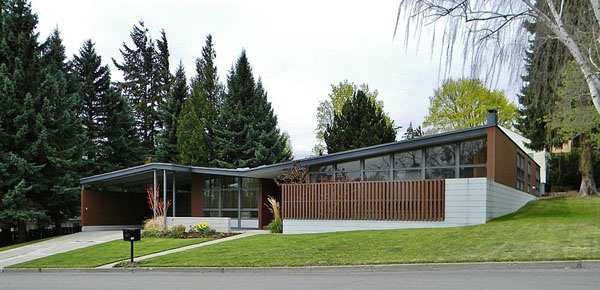
This rural mid-century modern home was originally built by local architect James Cowan in 1957 for the Devney family, located in the Craig Hill neighborhood of Ellensburg, Washington. The home is a nod to Frank Lloyd Wright’s Usonian style, with its L-shaped plan, native materials, flat roof, clerestory windows, and large cantilevered overhang for passive solar heating and cooling. The homeowner is an architect and furniture maker, who hand-made most of the plywood furniture seen throughout the home. Although the previous owners had renovated the home in 2006, most of the home’s original character remains untouched. The homeowner’s were fortunate enough to obtain a complete set of the original construction drawings of the house, and they plan to honor and reflect Cowan’s design. The home is comprised of 3,200 square feet of living space with five bedrooms and three bathrooms.
The L-shaped house mixes wood, glass and cement. A large wall of glass lets light flood into the living room and connects the space to the outdoors, but a wood-screened courtyard in front prevents it from feeling exposed to the street.
The homeowners created their own version of a screen door — a 3/4-inch board of fir plywood painted and dotted with circular cutouts.
This entry console made of plywood and cherry, with cutout slots was designed by the homeowner to make sorting incoming mail easy. The slate flooring is original to the home.
Most of the materials transfer between the indoors and out. A bed of river rock inside near the entryway continues outside, as does the concrete masonry unit wall.
The homeowner also built the long, low-slung console, coffee table and armchair in this living room.
The bamboo floors, installed by the home’s second owners, reflect the abundant light that pours through floor-to-ceiling windows. Small groupings of furniture anchored by no-frills carpets in dark browns and gray keep the attention on the home’s lines and the play of light and shadow.
An original teak and glass light fixture hangs over a table and bench that Scott built. The low-slung round table and console are both vintage.
One of many original pocket doors in the home connects the dining room to the kitchen, which retains its original layout and birch cabinets. The previous homeowners had installed new flooring, a tile backsplash and updated appliances.
From the homeowner: Where the dog bed is now, there used to be a swing-out desk that you could place up against the [picture] wall, to work at. I’d like to rebuild that one of these days..
The kitchen connects to a family room, creating an open concept that’s common today, “but when this home was designed, this was forward thinking,” states the homeowner. The original fireplace wasn’t drafting correctly, so the homeowners installed a woodstove in its place.
Sliding doors off the family room hide a large storage and utility room with floor-to-ceiling shelves. The homeowner built the sawhorse table, coffee table and couch; the latter converts into a guest bed.
When the Faulkners, shown here, entered the home for the first time after purchasing it, Scott presented Emily with a midcentury style clock that now hangs on the clear, vertical-grain Douglas fir paneling in the living room.
Clerestory windows are the hallmark of the upstairs rooms. In this home office, a Murphy bed that folds down to reveal a full headboard and shelves.
When the Murphy bed folds up, there is plenty of space to work in this home office.
Lined with sliding doors, the hallway has ample storage made even more functional through another creative original element: slide-out shelves.
Though another bedroom has larger windows, the homeowner’s made this their main bedroom because they love the way light pours in through the clerestory windows. The platform bed was built with underbed storage.
One of the couple’s greatest challenges was expanding storage in the carport for their motorcycles while still staying true to the home’s design. The couple increased a storage area by 6 feet, built doors to match the home’s front “screen” door and repurposed the home’s siding to create a wall.
Photos: Kimberley Bryan


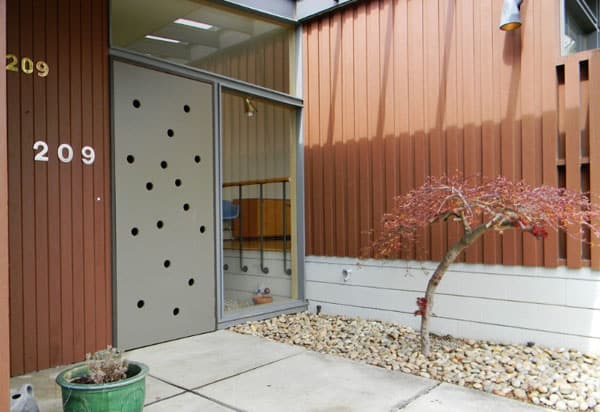
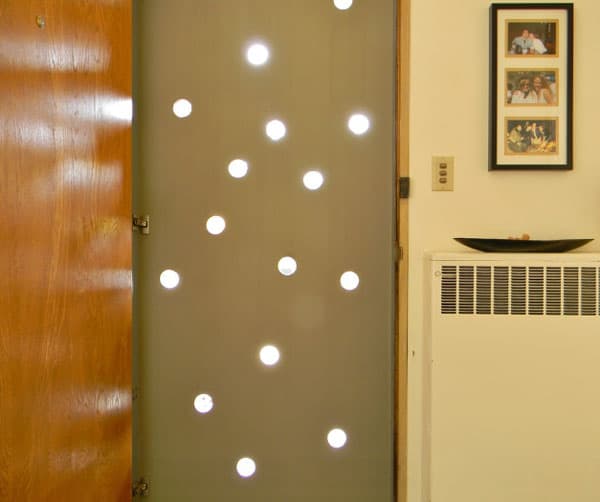
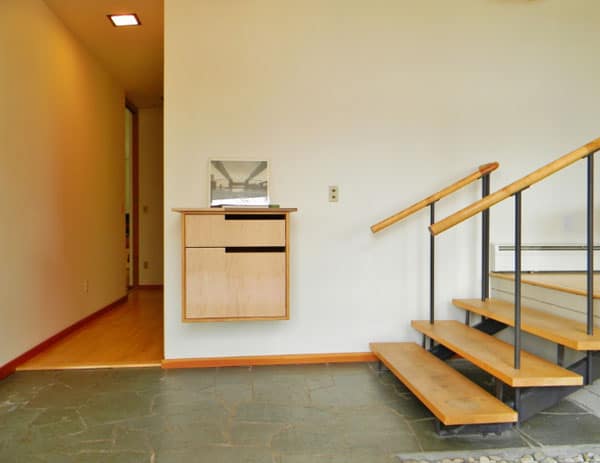
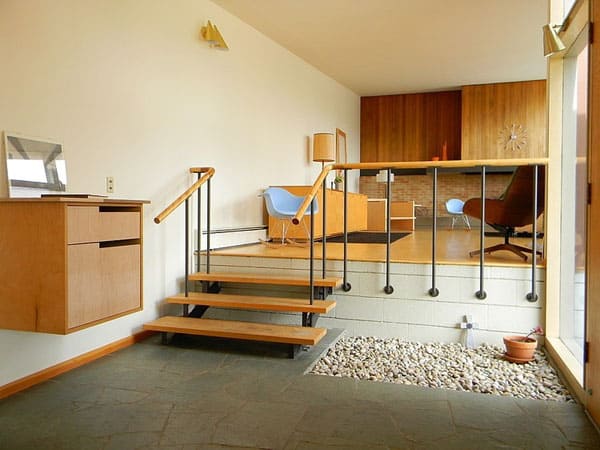

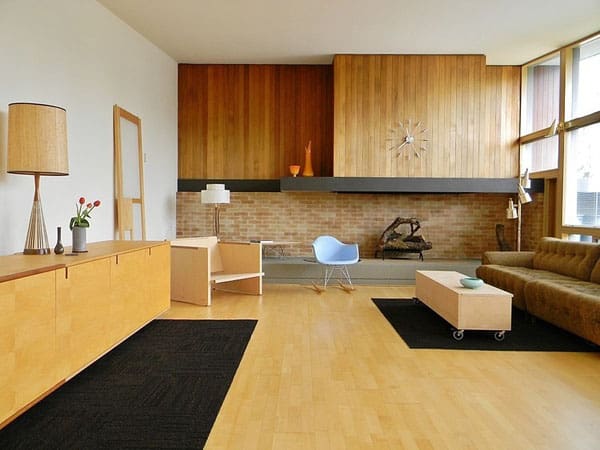
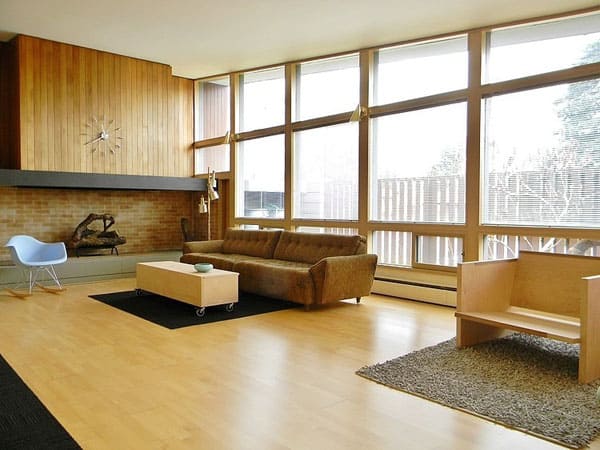
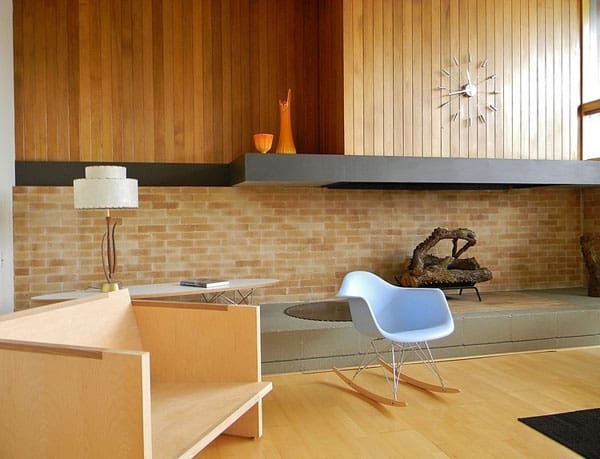
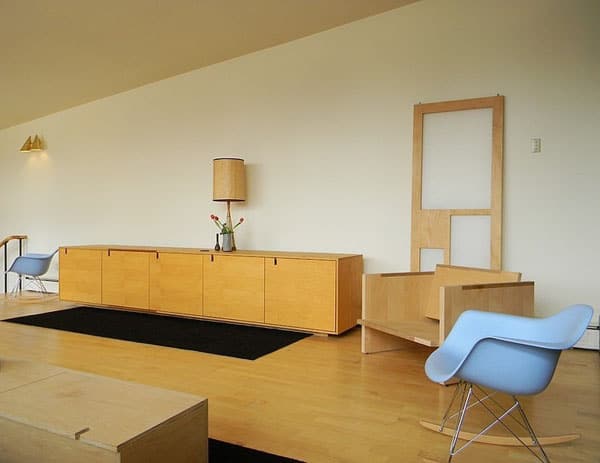
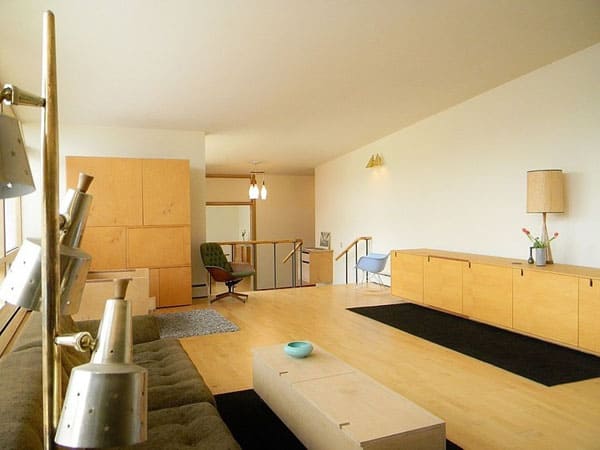
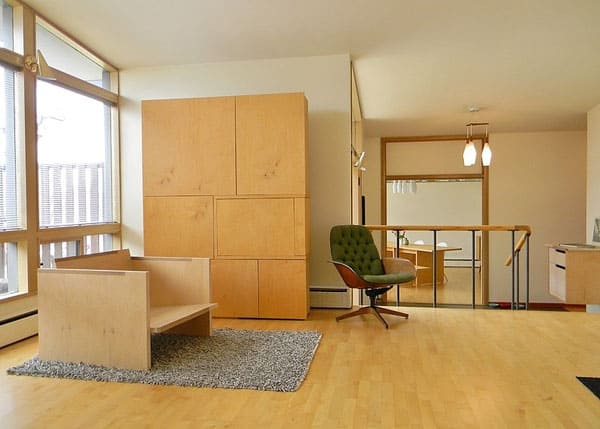
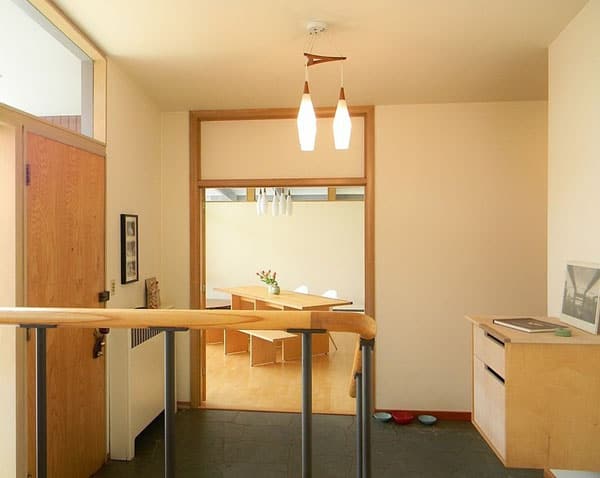
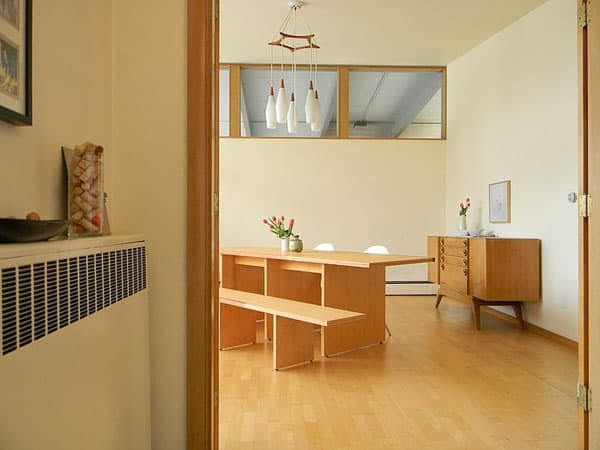
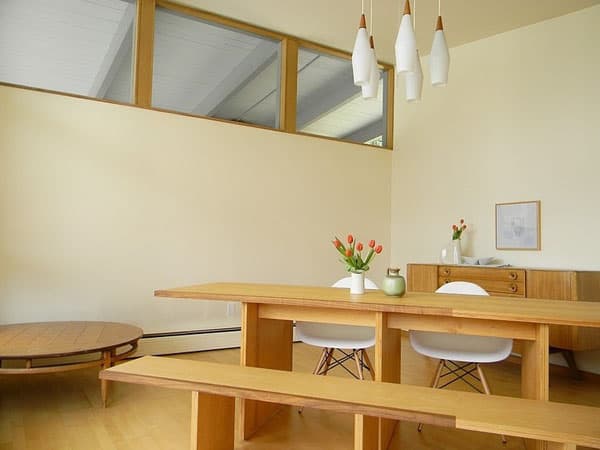
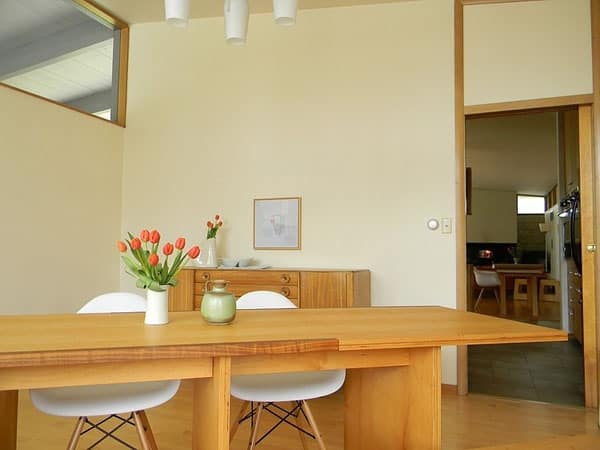
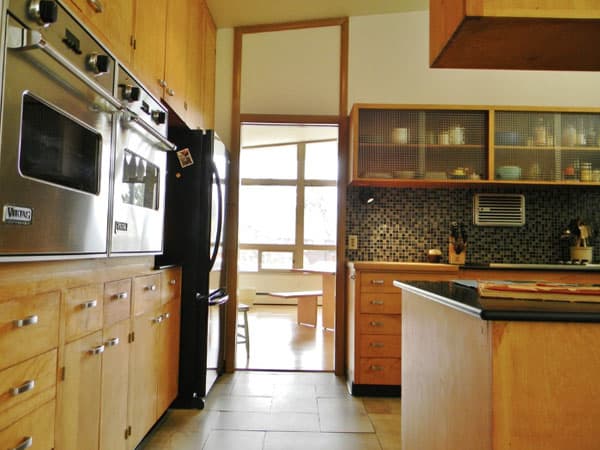

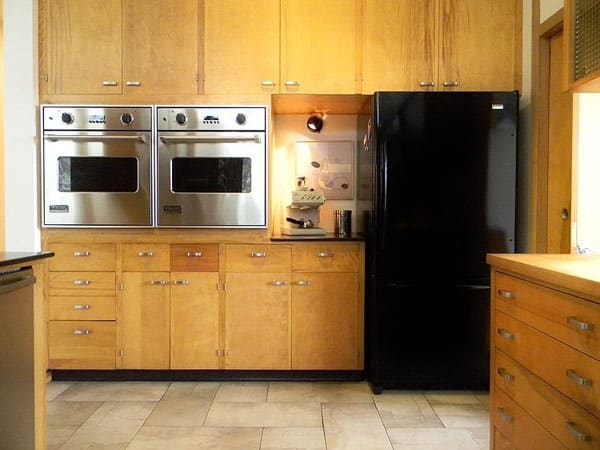
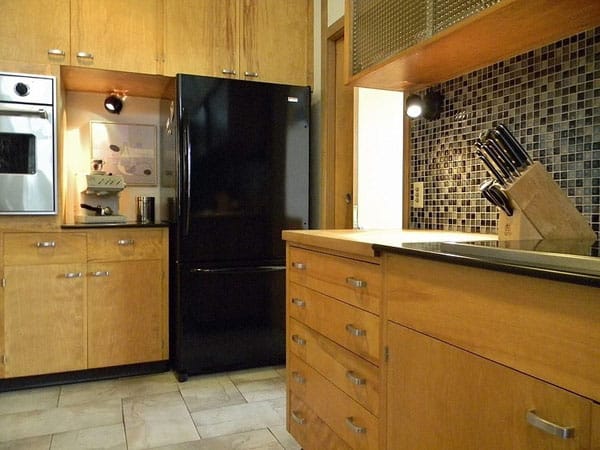

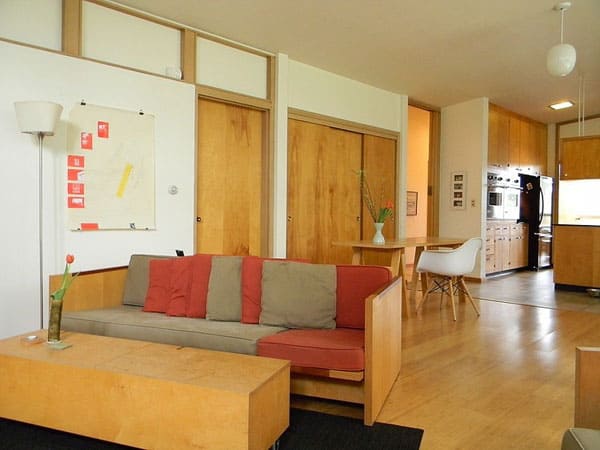
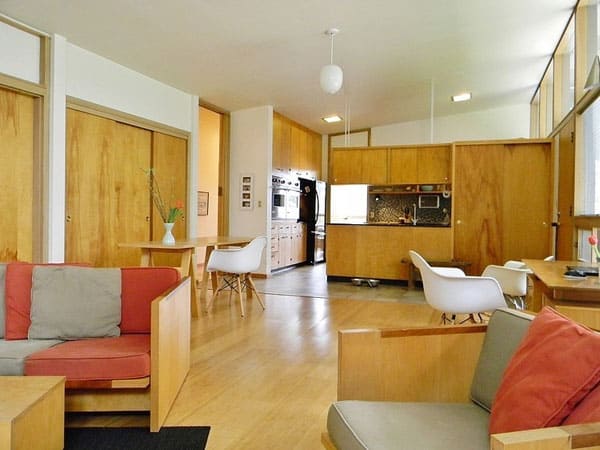
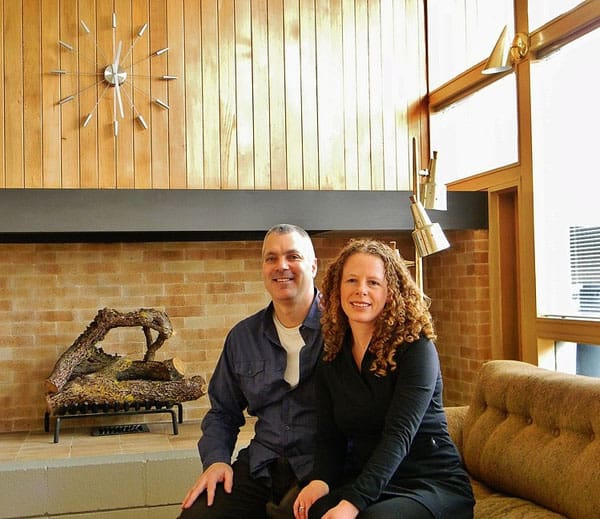
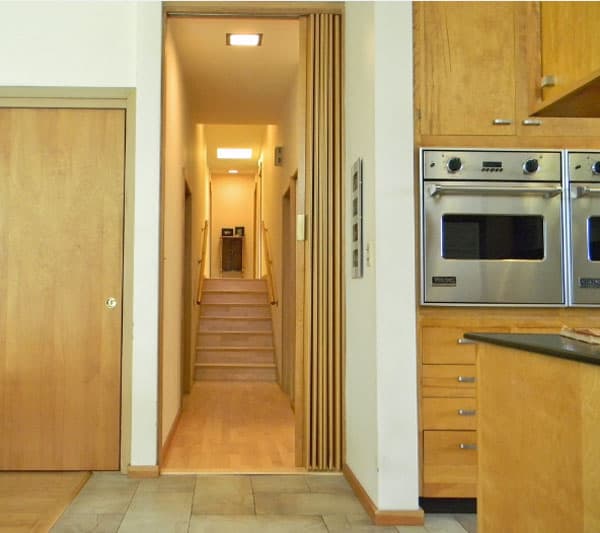
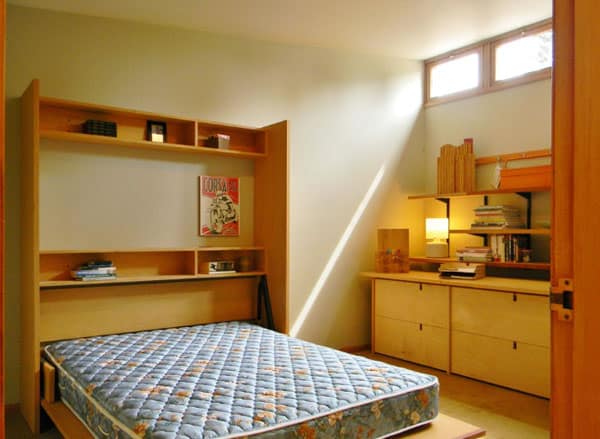
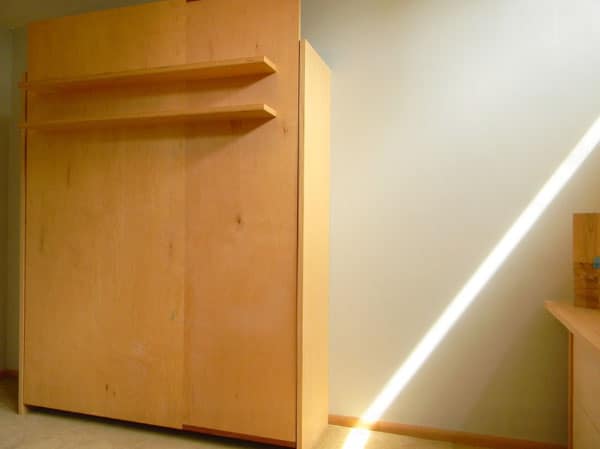
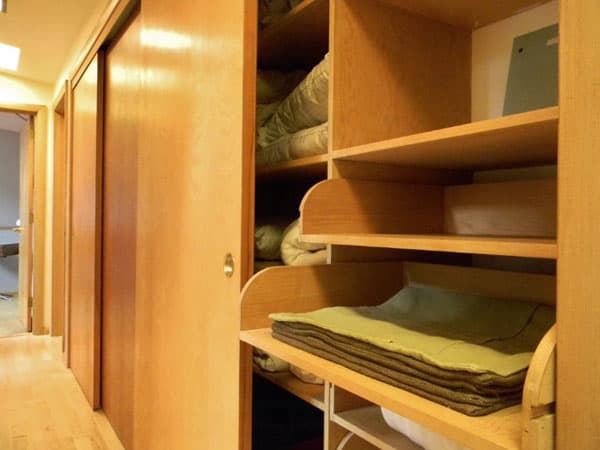
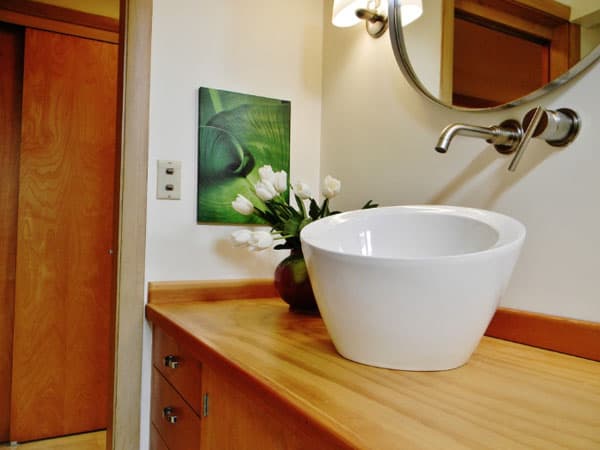
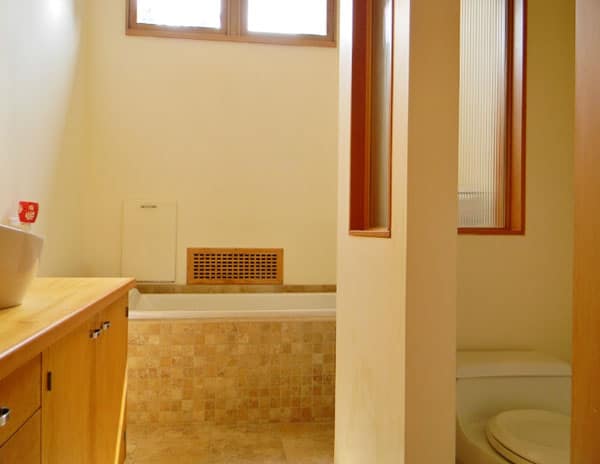

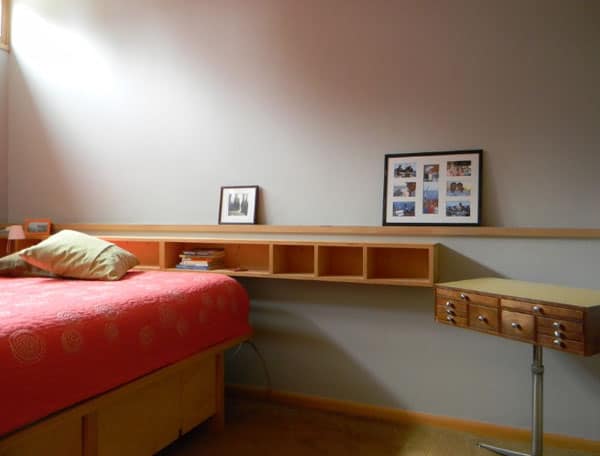
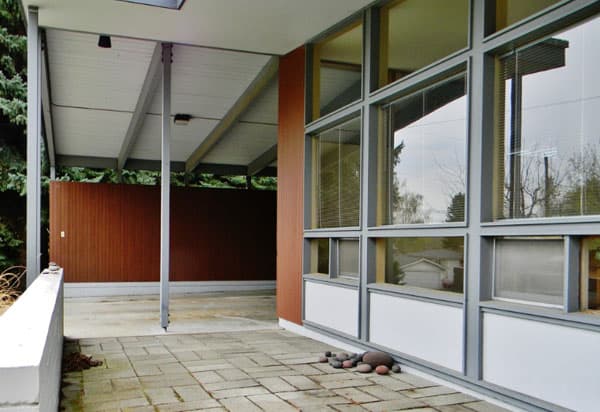

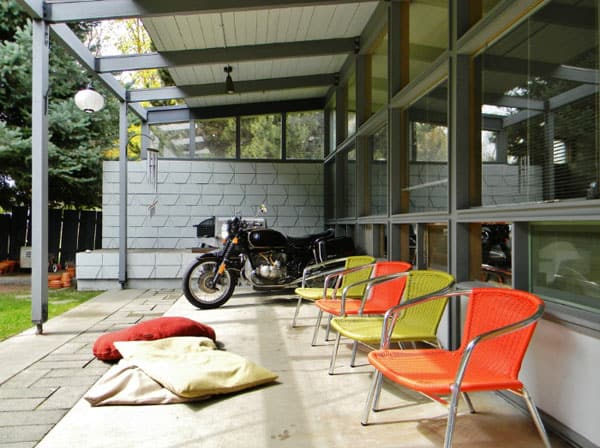
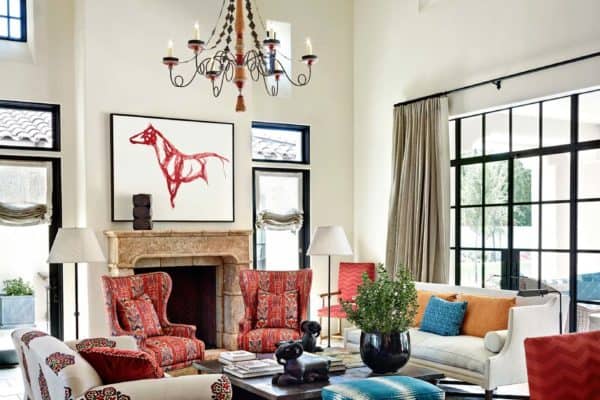

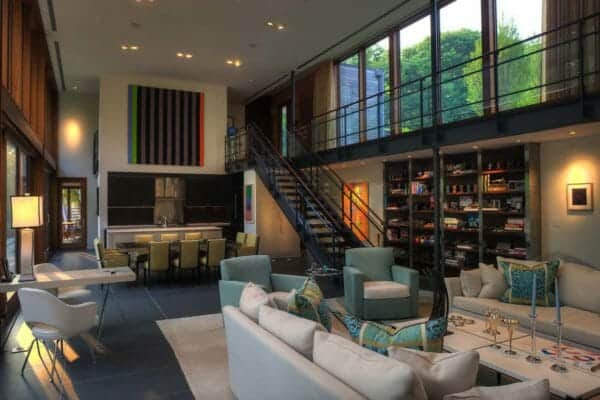
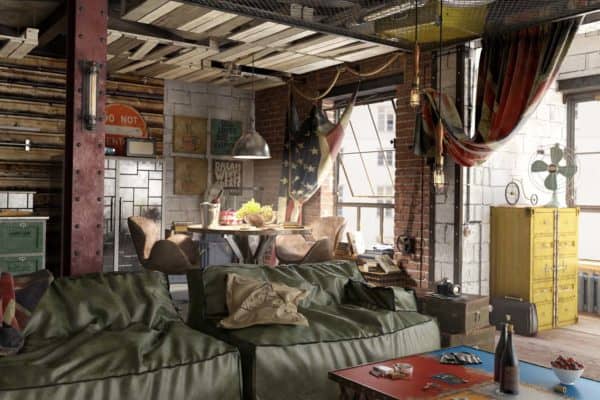
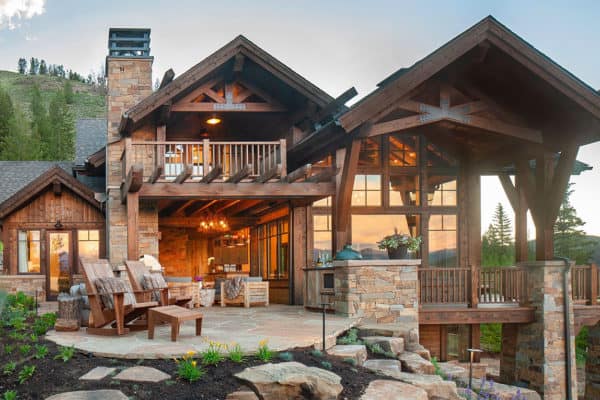

0 comments